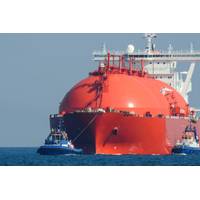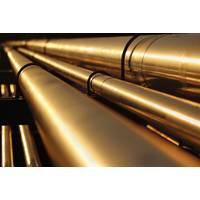Andy Home, recycling pioneers racing to close rare earths scrap gaps
This question is more urgent now than ever after China restricted its exports in the first half of this year. The move sent shockwaves throughout Western manufacturing chains. The race to create domestic mine-to magnet supply chains is accelerating, especially in the United States. Here, the Department of Defense has taken a direct stake, MP Materials, the operator of the only rare earths mining facility in the country, and guaranteed a minimum price for the products. Old laptops, powertools and smartphones are all part of the solution.
Germany's LEAG suspends H2UB green hydrogen plan
Energy firm LEAG announced on Friday that plans to build Europe's biggest green energy hub on the site disused coal-fired plant units in east Germany had been put on hold indefinitely. The announcement comes just a week after ArcelorMittal canceled plans to convert to carbon-neutral steel production two German steel mills, citing high costs of energy. LEAG announced that H2UB Boxberg would be postponed due to the fact that political and economic conditions had not evolved as expected.
China's imports major commodities suffered a hiccup in the month of May: Russell
China's imports have slowed in May. Crude oil, coal and iron ore all saw declines, amid worries about the growth of the world's largest economy. Customs data released Tuesday showed that only natural gas imports improved, with 10.11 million tons in May slightly above the 9.67 millions in April. However, they were still 11% lower than a year ago. The arrivals of crude oil in May fell to 10,97 million barrels a day (bpd), down 6.2% compared with April's 11,69 million bpd. This is also lower than the 12.1 millions bpd for March which was the highest month since August 2023.
China's imports major commodities suffered a hiccup in the month of May: Russell
China's imports have slowed in May. Crude oil, coal and iron ore all saw declines, amid worries about the growth of the world's largest economy. Customs data released Tuesday showed that only natural gas imports improved, with 10.11 million tons in May slightly above the 9.67 millions in April. However, they were still 11% lower than a year ago. The arrivals of crude oil in May fell to 10,97 million barrels a day (bpd), down 6.2% compared with April's 11,69 million bpd. This is also lower than the 12.1 millions bpd for March which was the highest month since August 2023.
Russell: Trade truce will not revive China's energy imports from the US
Markets have welcomed the move by China and the United States to negotiate and reduce tariffs, but this will not do much to restore trade in energy commodities. In a truce that will last 90 days, the United States will lower its tariffs for imports from China by 30% while Beijing reduces its duties on U.S. products to 10%. The agreement, which was reached after two days of discussions in Geneva last week between the two parties, has brought the trade relationship off the edge it was heading towards.
Russell: Trade truce will not revive China's energy imports from the US
Markets have welcomed the move by China and the United States to negotiate and reduce tariffs, but this will not do much to restore trade in energy commodities. For a period of 90 days, the truce will see the United States lowering its tariffs on imported goods from China to 30 percent while Beijing lowers its duties on U.S. products to 10 percent. The agreement, which was reached after two days of talks between the two parties in Geneva last week, has brought the trade relationship off the cliff that it was heading towards.
The prize is worth billions of dollars, but winning it is the key: Russell

Decarbonising steel is one of the biggest challenges to meeting climate goals. However, it could be extremely profitable for those companies and governments willing to take on the risk. Steel value chain is responsible for 7 to 9% global carbon emissions. It is the biggest industrial contributor, and therefore a primary target for many countries' and companies' goals for net-zero in 2050. About 80% of the steel emissions are caused by one single process. This is the removal of oxygen and other impurities from iron ore to produce pig iron, or crude iron.
The massive Simandou iron ore mine could end Australia's golden age of iron ore, or it can start a new one. Russell

It is overused to the point of being meaningless. But the Simandou mine, located in Guinea, West Africa is a game changer. It is expected that the full 120 million tons of cargo per year capacity will be reached fairly quickly. The four Simandou blocks are impressive for their size and infrastructure challenges. They boast a 620-kilometre rail line (384-mile) as well as a new port that has dedicated vessels to transship bulk carriers offshore. Simandou, however, is not just a technical marvel.
The massive Simandou iron ore mine could end Australia's golden age of iron ore, or it can start a new one. Russell

It is overused to the point of being meaningless. But the Simandou mine, located in Guinea, West Africa is going to change the iron ore seaborne market. It is expected that the full 120 million tons of cargo per year capacity will be reached fairly quickly. The four Simandou blocks are impressive for their size and infrastructure challenges. They boast a 620-kilometre rail line (384-mile) as well as a new port that has dedicated vessels to transship bulk carriers offshore. Simandou, however, is not just a technical marvel.
Sources say that India's steel minister is seeking $1.7 billion from the budget to assist mills reduce emissions.
Two government sources who are directly involved in the matter said that the Indian steel ministry requested 150 billion rupees (1,74 billion dollars) to be allocated to the budget as incentives for mills to produce low carbon steel. Nirmala Sitharaman, Finance Minister, will present the federal Budget for 2025-2026 on February 1. India, which is the second-largest steel producer in the world after China, is working on a policy to decarbonise the production of the alloy. This…
Are price movements a result of structural shifts? China's commodity imports are bifurcated: Russell
China's imports in 2024 of major commodities were a mixed bag. Iron ore, coal, and natural gas volumes reached record levels, while crude oil was weak. Raw data from the largest buyer of natural resource in the world suggests that some parts of the economy perform well, while others are struggling or are undergoing structural changes. The main challenge when analysing China's imports of commodities is to separate temporary factors from those that are part a longer-term trend. Crude oil may be the best example.
Russell: China's crude oil imports in November recover and other commodities remain strong
The Chinese economy is having a great week, as the outlook has improved amid new stimulus measures. Commodity imports have also performed well in November. The CSI300 index, which is the benchmark, rose 3.2% on the opening day, while government bonds rallied. The announcement of additional monetary stimulus in the official media boosted sentiment. However, the high imports of commodities in November also helped. Natural resources are an important indicator of China's health, as it is the largest buyer in the world.
Think tank: China could reduce CO2 emissions by a third with new UN targets by 2035
A Thursday report by an environmental think-tank suggested that China's carbon dioxide emissions, which contribute to climate change and are a major contributor to global warming, could drop by a third in 2035 if the country makes more ambitious commitments at the United Nations. In order to meet their Paris obligations, countries must submit new and stronger "nationally defined contributions" (NDCs), to the U.N. before February in order to set goals for 2035. China's pledges, as the largest emitter of greenhouse gases in the world, will be scrutinised closely.
LNG Import: China is World's No. 2 buyer in 2018

China's imports of liquefied natural gas (LNG) in December soared 25 percent from the same period a year earlier to a monthly record of 6.29 million tonnes, customs data showed on Wednesday.The previous record of 5.99 million tonnes was set in November.For the whole of 2018, imports grew 41 percent from 2017 to a record 53.78 million tonnes, according to the data from the General Administration of Customs. That saw China retain its position as the world's second-buyer buyer of the super-chilled fuel after Japan…
US Energy Companies Fume over Rejected Steel Tariff Exemptions

The U.S. Commerce Department recently granted a tariff exemption to oil major Chevron for its imports of 4.5-inch Japanese steel tubes for oil exploration.But the department rejected a similar request from Borusan Mannesmann Pipe to exclude 4.5-inch steel pipes imported from Turkey for casing used to line new oil wells.The reason: multiple U.S. steelmakers objected to Borusan's application, arguing they could supply the product, according to the department. Chevron drew no such objections.When U.S.
China Opening May Spark Iron Ore Markets
In the relatively short space of the past decade the paper iron ore market has grown from virtually nothing to exceed the physical market, but now the industry is grappling with what comes next. While the growth in iron ore futures and exchanged-cleared swaps has been impressive, iron ore is still a long way behind other commodity markets, such as crude oil and some agricultural products, where paper trade exceeds physical by large multiples. There are two main paper markets for iron ore…
Two U.S. Coal Miners See Growth Amid Sector's Gloom
U.S. electric utilities are expected to shut hundreds more of their coal-fired power generators in the coming years, extending a long trend away from coal and toward natural gas that has cast a pall over the mining industry. But not every U.S. coal company sees a bleak future. Ramaco Resources, which produces coal for steel mills, and Consol Energy, which supplies coal to larger power plants, have ramped up investments even as the industry shrinks. President Donald Trump has promised to revive the coal sector by stripping away burdensome regulation.
China Still the Main Game for Commodity Demand: Russell
China strode like a colossus over major commodity markets in 2017, as the world's biggest buyer of natural resources made its presence felt on demand for coal, iron ore, crude oil and liquefied natural gas (LNG). China's influence on major commodities is likely to remain the single most important factor driving supply and demand in 2018, but that's not to say next year will simply be a repeat of what happened this year. Still, some trends established in 2017 will continue, or even accelerate, with LNG potentially the best example.
Coking Coal Price Talks Stall
Talks between Australian miners and Japanese steelmakers over coking coal supplies have stalled as the Japanese companies are pushing to move to more flexible arrangements from the current quarterly fixed-price terms. The Japanese are backed by BHP, the world's biggest producer of coking coal, a key steelmaking ingredient. However, other miners are against upending the 45-year-old fixed price settlement mechanism. Any changes could potentially further roil a market hit by wild swings recently.
Coal's Future Remains Uncertain
A year after Donald Trump was elected president on a promise to revive the ailing U.S. coal industry, the sector’s long-term prospects for growth and hiring remain as bleak as ever. A Reuters review of mining data shows an industry that has seen only modest gains in jobs and production this year - much of it from a temporary uptick in foreign demand for U.S. coal rather than presidential policy changes. U.S. utilities are shutting coal-fired power plants at a rapid pace and shifting to cheap natural gas, along with wind and solar power.